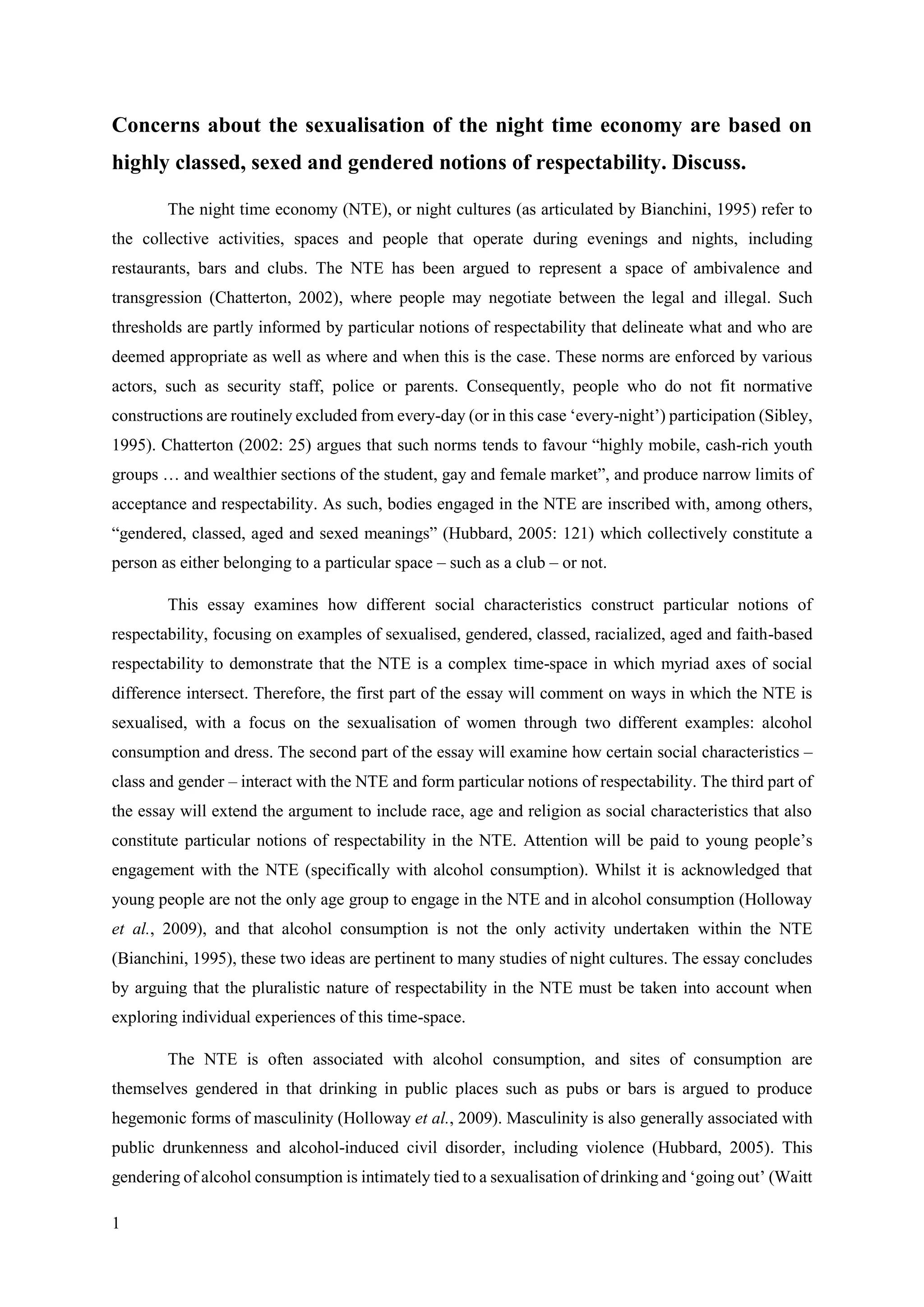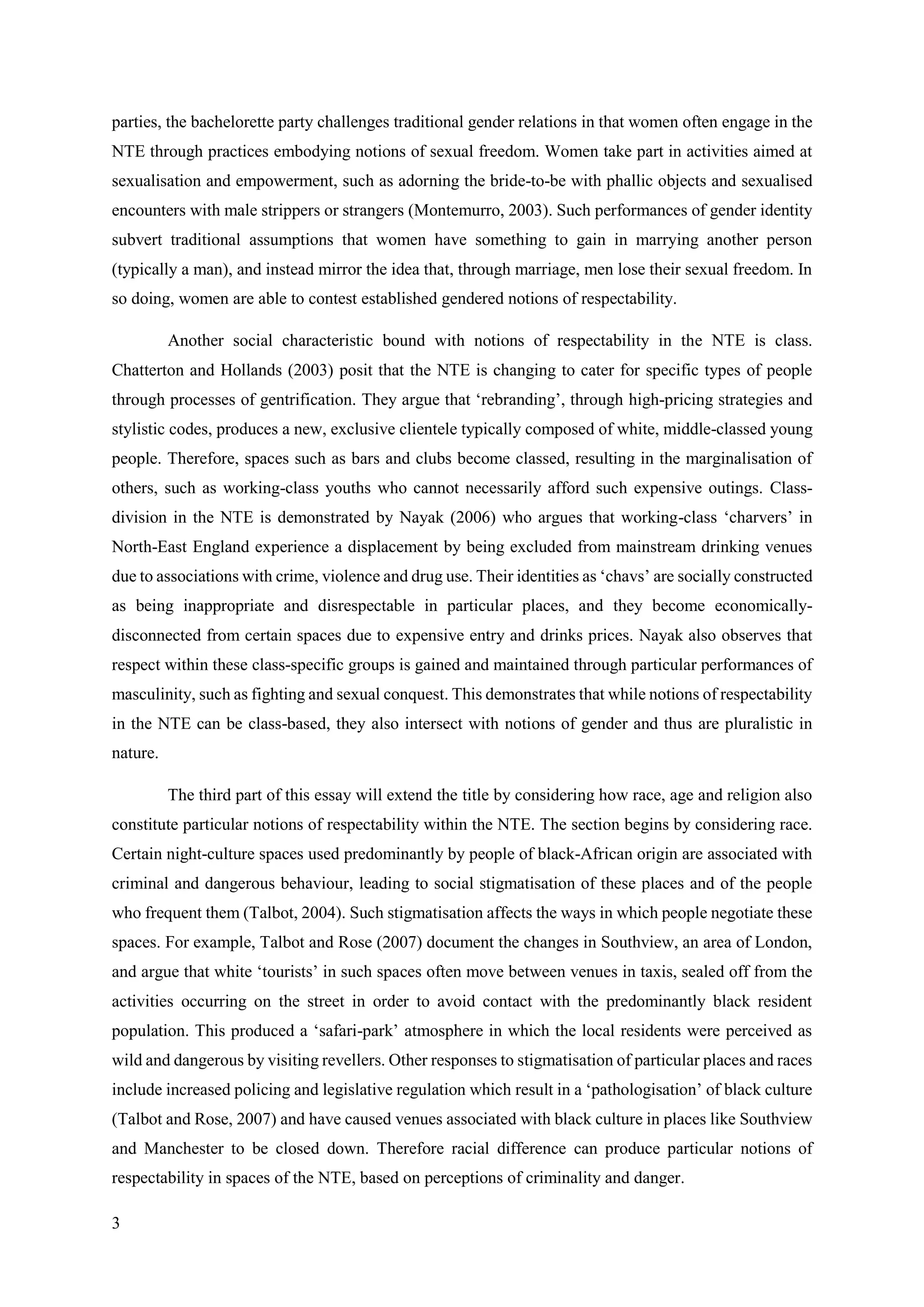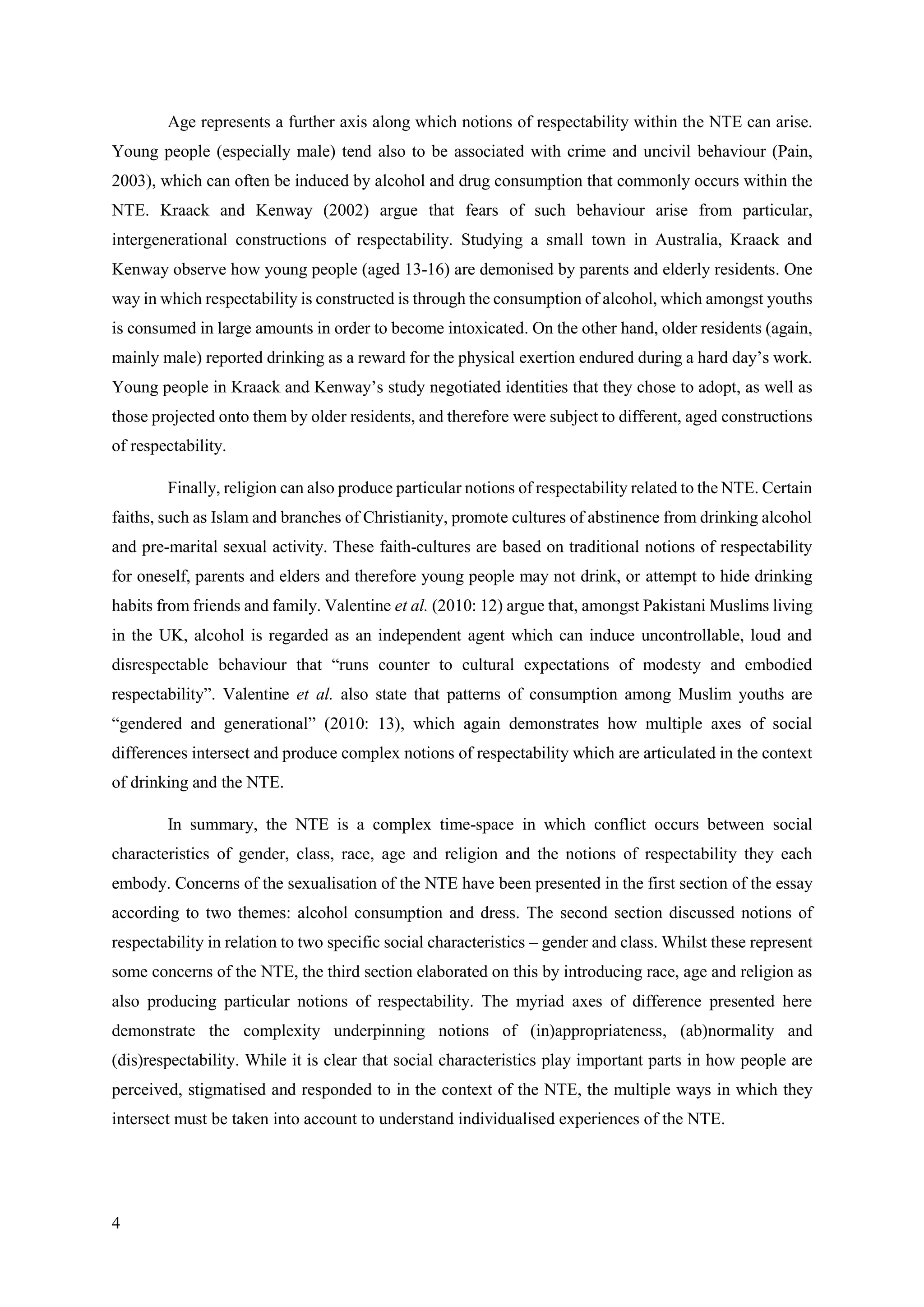This document discusses how notions of respectability in the night time economy (NTE) are based on social characteristics like gender, class, race, age, and religion. It argues that the NTE is a complex space where multiple aspects of identity intersect and inform what is seen as appropriate or disrespectable behavior. Specifically, it examines how the NTE is often sexualized through gendered expectations around women's alcohol consumption, dress, and interactions with men. It also explores how class and gender shape what types of people and behaviors are seen as respectable in certain NTE spaces. Finally, it discusses how factors like race, age, and religion also constitute ideas of respectability regarding behaviors like drinking. The document concludes that understanding individual





